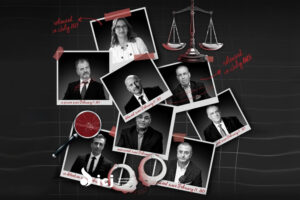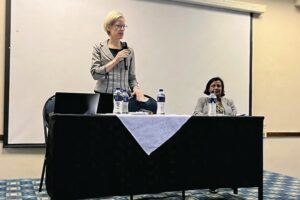Procedural Posture
The applicant, Satchwell, brought suit against the President of the Republic of South Africa to obtain the payment of spousal benefits to her same-sex partner under the Judges Remuneration and Conditions of Employment Act 88 of 1989. Counsel for the President argued that, because South Africa did not recognise same-sex marriage at the time, the applicant and her same-sex partner were not “married” and could not qualify for spousal benefits. The trial court declared unconstitutional the limitation of spousal support benefits to heterosexual couples. The matter was referred to the Constitutional Court because all declarations of unconstitutionality had to be confirmed.
Facts
The applicant, a judge employed by the Government of South Africa, provided evidence of her financial interdependence and that of her same-sex partner, and testified that she and her partner were considered married by friends and family.
Issue
Whether the restriction of spousal benefits to heterosexual couples violated the Constitution of South Africa.
Domestic Law
Constitution of South Africa, Section 9 (equality and non-discrimination).
Judges Remuneration and Conditions of Employment Act 1989, Sections 8 and 9.
National Coalition for Gay and Lesbian Equality v. Minister of Home Affairs, Constitutional Court of South Africa, 1999 (finding unconstitutional statutory and common law offences of sodomy).
Comparative Law
Miron v. Trudel, Supreme Court of Canada, 1995 (finding marital status to be an analogous ground protected from discrimination under S. 15 of the Charter).
Reasoning of the Court
The Court recognised that, because same-sex couples were unable to marry legally in South Africa, conjugal approximations of legal marriage were the only life partnerships available to same-sex couples. In the manner of heterosexual weddings, same-sex life partnerships were often celebrated through public ceremonies.
According to the Court, the applicant was required to demonstrate a permanent, conjugal relationship with her spouse in order to obtain benefits for her. The applicant had produced evidence that she and her partner were recognised as effectively married by the community; that they shared finances, and that they were each other’s beneficiaries in life insurance. The Court believed that this evidence was sufficient to establish that they were in a permanent conjugal relationship. The applicant’s partner should therefore have been considered a spouse for the purpose of the Judges Remuneration and Conditions of Employment Act, which provided for pensions to be paid to judges’ spouses under Sections 8 and 9. For practical purposes, the Court held that the Act should be read as if the following words appeared after the word spouse: “or partner in a permanent same-sex partnership in which the partners have undertaken reciprocal duties of support.”
The Court held that Sections 8 and 9 of the Judges Remuneration and Conditions of Employment Act had to be extended in light of the equality clause in Section 9 of the Constitution, which prohibited unfair discrimination based on an individual’s membership in a legally protected group. The equality clause specifically named sexual orientation as a protected individual characteristic, on a par with gender, race, or religion. The Court therefore held that the language of the Judges Remuneration and Conditions of Employment Act failed to adequately protect non-heterosexual couples.
The Court also considered the importance of same-sex marriage in a multicultural and tribal context. It noted tribal institutions of same-sex marriage between powerful women or women incapable of having children. In support of this conclusion, the Court cited Miron v. Trudel, where the Canadian Supreme Court had relied on a broad definition of marriage. Precedent also recognised a wide range of family structures and conjugal unions. The case of National Coalition for Gay and Lesbian Equality v. Minister of Home Affairs, decided two years earlier, acknowledged that social norms regarding marriage were subject to change and that the definition of marriage should not be narrowly construed for government purposes. As a matter of human rights and recognition of cultural self-determination, therefore, it was unconstitutional in South Africa to withhold benefits from a same-sex spouse, since withholding benefits constituted discrimination against a diverse group of individuals in same-sex couples.
The President conceded that withholding benefits was discriminatory but argued that extending benefits to same-sex couples was detrimental to public policy. He argued that the grant of benefits to same-sex couples would have to be extended to unmarried heterosexual couples if those couples could be shown to be in a permanent partnership. The Court rejected this line of reasoning because unmarried heterosexual couples, unlike homosexual couples, had the option to marry.
Satchwell v. President of the Republic of South Africa and Another, Constitutional Court of South Africa (full text of judgment, PDF)



